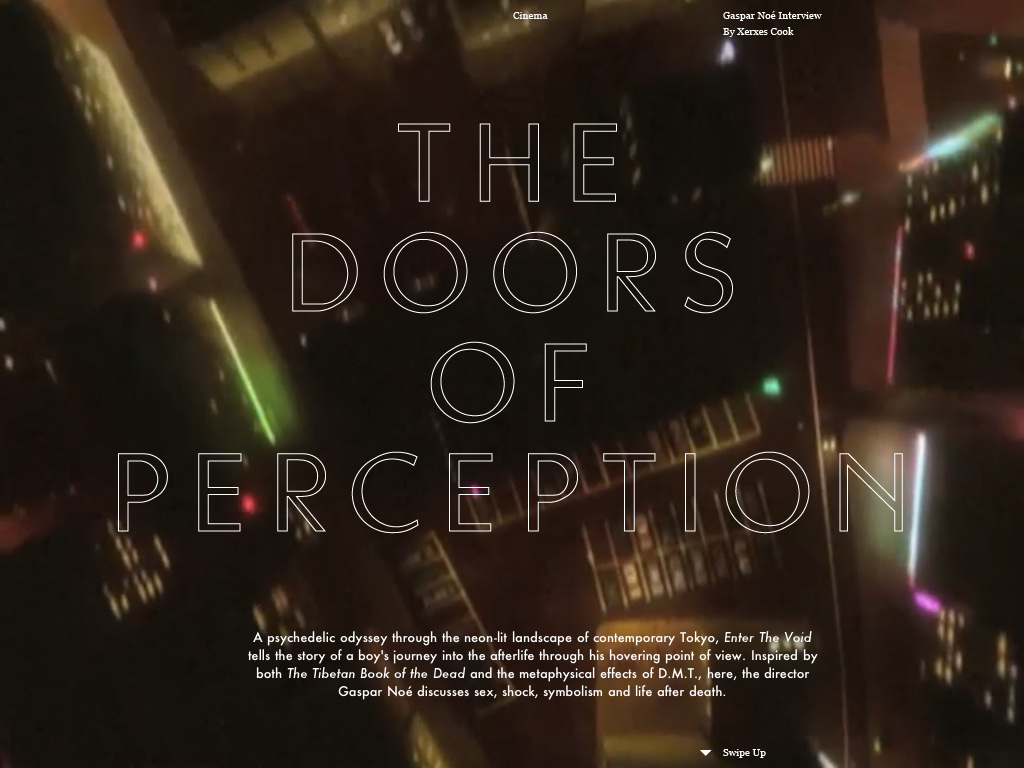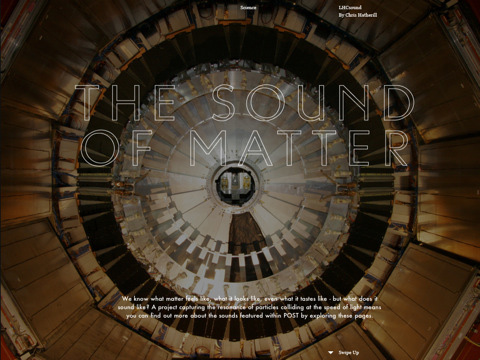Post
Our interview with the founder of one of the world’s first iPad-only magazines

In the digital revolution’s wake, popular stances have it that only publications developed specifically for these new mediums are truly relevant. Post, one I recently spent time checking out, uses sound, video and interactive technology to cover the usual milieu of topics. We recently sat down with Post’s creator Xerxes Cook to find out more about how they made the entertaining application, available for download from iTunes for $3.

Why iPad and why now?
We felt the iPad has created another medium for experiencing information, one that sees us act beyond the traditional parameters of magazine editors, and also in some way as television programmers, film producers and computer game developers. It is an exciting time to be in publishing.
We consider the first issue of Post, called “Matter,” to be issue zero—a proposition for what can be done within this new medium. It is very much an experiment, one which we imagine will be continually evolving.
How long did it take to create Post?
It took us around four months, and it is a process far removed from print publishing or the blog-based format of most websites. Some of our features—especially in the next issue—take as much programming as other apps in their entirety, so we have now learned the order in which we need to produce and program the different elements of the magazine.



Was all of the content produced with the iPad in mind?
Other than the video art triptych by Sema Bekirovic, all of the elements were produced in-house. We were constantly exploring the different ways in which we could execute and communicate with the iPad in mind. If something could be replicated in a print magazine, we scrapped the idea and started from scratch. This also had an effect on Currents, a front of book section that can display videos from performances that have happened, yet had only been reported as previews or reviews in the press.
We also had to consider sound—how does a magazine have a soundtrack? Where shall this sound be placed? We wanted the sounds featured within the magazine to enhance the content of the magazine and create a “gesamtkunstwerk” of sorts, in which nothing falls out of the register of a total aesthetic experience. So, seeing as the first issue takes the shift from the physical state to the digital, an exploration of the tangibility of matter, our sounds came from the Large Hadron Collider at Cern. They are the sounds of particles colliding at the speed of light—these sounds were created by collating the information from these collisions and feeding them into an algorithm to create individual sound “objects” which we then rearranged to create a soundtrack that runs throughout the entire magazine.


Will subsequent issues be separate apps or releases within the one now available?
Yes, and our next issue, Post “Gravity” is an outer-space theme special that marks the 50th anniversary of Yuri Gagarin’s space walk. Post “Gravity” explores the many ways in which humanity has sought to transcend the invisible forces that bind us to the earth, and we are collaborating with the International Space Station on many of our features. For our cover shoot, we wanted to create a fashion spread in which a single tap brings up a 3D wire-frame of the model’s body, which you can then rearrange and distort before flipping back to real video. To do this we had to crack the Xbox Connect software and write computer code of the fly, during the shoot itself. We are previewing this cover story during Paris fashion week at both Colette and the opening of La Gaite, the multimedia AV museum that opens then.



Can you comment on initial downloads and session times as they relate to typical magazine consumption?
We hope to reach 10,000 downloads before we release the next issue and we are nearly there. It would take an hour to experience all the features within it, which is probably the average amount of time someone spends with a magazine other than “The New Yorker.”
However, we do accept that it is a very data-heavy application. At the moment we are experimenting with various ways of streaming content, creating almost two versions of the magazine, one that can be viewed both off-line and online without compromising the audience’s experience.












